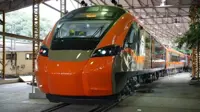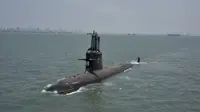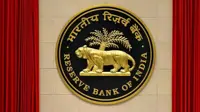Malabari delights
By The exotic pleasures o | 04 Sep 2003
 Kozhikode: Wherever you find packaged travel for tourists who come to Kerala, the Malabar region is found amiss in the agenda.
Kozhikode: Wherever you find packaged travel for tourists who come to Kerala, the Malabar region is found amiss in the agenda.
So far, fortunately or unfortunately, we have created a perception among the world tourists that travel opportunities are better and more exotic in many places of Kerala than in the Malabar region.
There are several reasons for this misfortune. Probably the planners themselves have little perception about the tourists' places and products available in the Malabar region or that there is a lack of interest in developing the broad and diverse range of unique products available across the Malabar region due to poor infrastructure.
Malabar is often thought to be far away and inaccessible. This is due to the fact that the road and air access to the region is limited and underdeveloped. There is a serious lack of reliable travel data and analysis, which keep the tourists in dark about the region. Even though Malabar is blessed with potential tourism products, lack of product readiness makes the prospects dull.
Marketing Malabar as a tourist destination should have a clear-cut strategy focusing on three important aspects. These are creating destination awareness, product improvement and positioning and actual sale of the products. There is too little awareness among the tourists about the wide range of travel experiences available in the Malabar region. This lack of specific knowledge about the Malabar region and the tourism products available in Malabar is the big hurdle in marketing Malabar as a tourist destination.
 The onus lies on the policymakers to package products based on the customer needs in such a way that these products create customer demand for the region. If the Malabar region has to get an approved destination status from the tourists, first of all the Kerala government, the tourism department, and the private players in the field of tourism should come together and formulate concrete plans for overcoming inherent weaknesses in the Malabar region, if any, and should implement sustainable tourism development projects there.
The onus lies on the policymakers to package products based on the customer needs in such a way that these products create customer demand for the region. If the Malabar region has to get an approved destination status from the tourists, first of all the Kerala government, the tourism department, and the private players in the field of tourism should come together and formulate concrete plans for overcoming inherent weaknesses in the Malabar region, if any, and should implement sustainable tourism development projects there.
The strategic directions of marketing Malabar should largely focus on encouraging infrastructure development and product packaging with the government, tour operator consortia, hospitality industry, product cluster marketers and associations. We should aim at encouraging creation of seasonal initiatives to encourage travel throughout the Malabar region. The much-talked about but less-developed places like Bekal, Kappad and Wyanad are to be our focus for marketing campaign along with the hidden rural potential of the region.
Malabar is the land with beaches, backwaters, jungles, rivers, hills, forts, monuments, temples, mosques and churches. Malabar Coast is best suited for beach tourism. Take for example Muzhuppilangad, India's only drive-in beach, which could be developed into a great extent to attract tourists. The other beaches of the Malabar region that require beautification and publicity are Bekal, Payyambalam, Kappad, Chavakkad and Natika. Some of these coastlines with their verdant hills of evergreen forests are an added advantage to attract adventure-loving tourists.
Historical forts like Thalassery, Kannur, Pazhassi and Arackal Palace are monuments that are a pride of a number of historical places throughout Malabar. Beypore, the legendary country shipbuilding coastal town, could be saved by promoting coastal tourism-related activities.
 The Malabar region, like any other region in Kerala, has a very rich historic past. Roman coins found in south Malabar and the traces of Dravidian words in some of the works of Roman personalities like Ptolemy are evidence of a strong Indo-Roman bond. Likewise, the trade between Arabian merchants and those of Malabar in spice, coffee, coconuts, gold, ivory monkeys and peacock from time immemorial later forged a permanent bond between Malabar and the Arab world.
The Malabar region, like any other region in Kerala, has a very rich historic past. Roman coins found in south Malabar and the traces of Dravidian words in some of the works of Roman personalities like Ptolemy are evidence of a strong Indo-Roman bond. Likewise, the trade between Arabian merchants and those of Malabar in spice, coffee, coconuts, gold, ivory monkeys and peacock from time immemorial later forged a permanent bond between Malabar and the Arab world.
If you consider the modern world, Malabar again shoots to prominence with its Kappad beach, which bears the remnants of the first arrival of Vasco de Gama in 1498. Go further north of Malabar, yet another international connection stands in the form of a bungalow in the name of the German missionary cum linguist, Dr Hermann Gundert. With these rich historical connections and the 'yet-to-explore' tourist destinations, Malabar is still waiting for the Midas touch from the tourism industry.
Malabar can be promoted as a region for tourism for the erudite to facilitate research into these historic connections to resurrect the facts and help reconstruct monuments and renew relationships. Malabar could well be transformed into an Indo-Arabic-European research centre.
It is history that in search of spices the Portuguese, Dutch, Arabs, Chinese, French and the British frequented Malabar. Malabar, from a generally neglected region status, could become yet another high-voltage centre for cultural and heritage tourism in Kerala, if these things of the past are well researched and highlighted to the world. We can catapult the Malabar region into a prominent position in the world tourism map only with these two objectives in focus.
Still, there are many things that we can do. For example, the hitherto unexplored and under-exploited hilly regions of Wyanad offer tremendous opportunity for eco-tourism, which is a potential area we can undertake. One interesting aspect of Wyanad is that there is a tremendous potential for showcasing tribal tourism. The foreign tourists are especially interested in visiting and learning about the indigenous people of the destination they travel about. Hence a well-planned tribal tourism will not only attract the foreigners to the Malabar region but also help improve the socio-economic condition of the tribes there.
 To make such things happen, which will popularise the Malabar region, the government should encourage the renowned private players in the hospitality industry to set up good hotels there and also motivate well-known travel agencies to establish their foothold, which will facilitate such an organised effort in this region.
To make such things happen, which will popularise the Malabar region, the government should encourage the renowned private players in the hospitality industry to set up good hotels there and also motivate well-known travel agencies to establish their foothold, which will facilitate such an organised effort in this region.
The tourism department could think of radical measures like:
Organising travel industry workshops: One other way to draw up plans is to organise travel workshops in the Malabar region to get a clear picture of what we can do to promote Malabar as a tourist destination. Such workshops could be held in Kozhikode, Thallassery or Kannur, inviting hoteliers, travel agents, intellectuals, business magnates and other prominent personalities from the Malabar region.
Outsourcing market intelligence: To get insights and plans on escorted group travels, ecotourism, rural tourism, historical, cultural and kayal tourism in the Malabar region, we could get the help of tourism marketing firms and let them do a very good project for us, based on which we could build our plans and attract investors or partners in success. On the agenda should be Malabar zonal mapping for identifying and developing attractive areas.
Exploring the possibilities of encouraging and showcasing the unique handicraft potential of the Malabar communities by forming cooperatives: For example, the metal works and cane/wood crafts, and handlooms are a hidden potential of the Malabar people, which could be brought to the fore. Such an effort will not only attract tourists to the region but also help in socio-economic uplift of the artisans in the Malabar region. In the event of forming a cooperative, we can explore the possibility of organising exhibition-cum-sale events in tourism melas in the country and also in the travel markets elsewhere in the world.
Creating familiarisation tours: There could be a familiarisation tour for the world tour operators across India, who could be taken to important places in the Malabar region to help them plan their tour packages to this region. This way, a lot of foreign tourists and tourists from outside Kerala could be brought into this region, which in turn will attract hoteliers to build good hotels and other investors to establish entertainment parks and other tourist facilities in the region. This will lead to facilitating mini vacation experiences by tour operators, which will put Malabar in a better limelight.
Holding the Kerala Travel Mart in Kozhikode: Nothing will be more appropriate than organising the KTM once or twice in Kozhikode or Bekal to showcase and popularise the region. For this of course, there has to be good groundwork in improving the infrastructure in the region, including about 500 hotel rooms.
Undertaking consumer-focused creative marketing: Slowly and simultaneously the tourism department could develop and deliver a fully integrated marketing programme and media campaign through advertising, non-traditional partnerships, multimedia and public relations that will position Malabar as a desirable place for the tourists for exploration. Things like visitor information VCDs and Internet connectivity will add charm to this creative marketing campaign.
Today's tourism doesn't cater to just one or two segments of tourists. It actually aims at meeting the needs of a whole lot of tourists. For example, the tourism products to be packaged to market Malabar as a high-profile destination should attract the 'outdoor-active and wired' youth segment as well as the history- and mystery-loving students and tourists.
 They should meet the demands of the indoor leisure traveller as well as the middle-class traditional family traveller. The products should satisfy the cost-conscious traveller and also the elite luxury loving tourists. Thus we can have various products based on eco-tourism, heritage and cultural tourism and even sports tourism like mountaineering and water sports, for which there is no dearth of opportunity in the Malabar region.
They should meet the demands of the indoor leisure traveller as well as the middle-class traditional family traveller. The products should satisfy the cost-conscious traveller and also the elite luxury loving tourists. Thus we can have various products based on eco-tourism, heritage and cultural tourism and even sports tourism like mountaineering and water sports, for which there is no dearth of opportunity in the Malabar region.
As important as packaging the tourism products to showcase Malabar is the need for training and development. The people of Malabar are a friendlier lot, who could be easily trained in the trade of tourists' guidance and hospitality. Hence this task should also be well charted as part of our management strategy to market Malabar as a tourist's destination.
Strategic marketing initiatives in the region to make it better known to the world tourists are to focus on:
I: Tapping its strengths like
- Restoration of historic monuments in the region and facilitating tourism research
- Exploitation of hilly areas for eco-tourism and adventure tourism
- Improving beach tourism by beautifying the coastal lines and introducing water sports
- Developing cultural tourism products like popularising Theyyam to the level of Kathakali
II: Overcoming weaknesses by way of
- Improving the roadways
- Enhancing airway access by expanding the Kozhikode airport and establishing Kannur airport
- Preparing reliable travel data and network for creating more awareness
- Bringing in trade investments through encouragement and concessions to business houses and entrepreneurs for improvement of its cities
The Kerala Tourism Department is well known for its marketing innovations and initiatives, which have put the state on a high pedestal in the world tourism arena. Capitalising on and leveraging the synergies of the marketing tactics of the state tourism department and other private players in the field of tourism and hospitality industry, Kerala can embark on an aggressive and extensive tourism promotion activity in the Malabar region and work on a marketing strategy with a competitive edge to go beyond the usual and familiar to provide the tourists value for money.
(The above feature is an extract from a presentation made at a seminar organised by Malayala Manorama in Kannur on 2 September 2003)

































